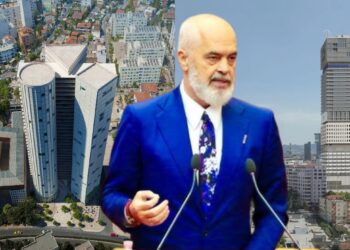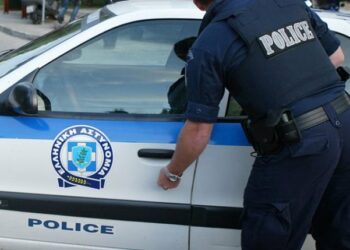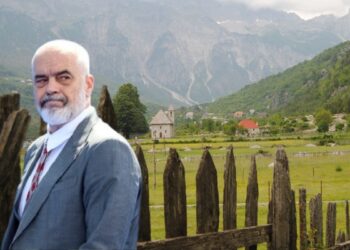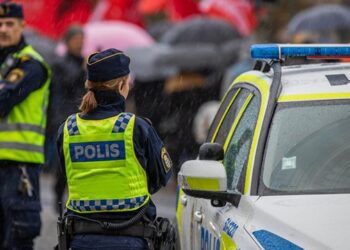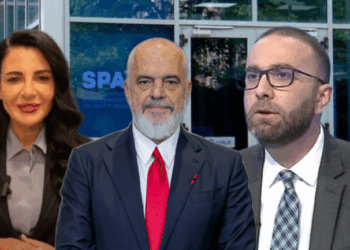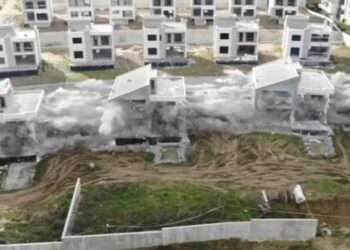Building has been the main political theme of the last two weeks. With justice reform in the pocket, Edi Rama used the social network to bombard us from the government beach in Dhërmi with new construction plans, most of which were prepared by his loyal studio Atelier 4.
Public procurement does not seem to be a barrier anymore, year after year Albanian governments have produced a multitude of dubious legal links to avoid any “public”, “transparent,” or “open” procedures. The most efficient invention seems to be the so-called public-private partnership formula.
I looked for a little bit about private public partnership, as this term is now being used for a completely different legal-it is not a case when the government contracts a public contract with a private party, but a case in which the government creates a company jointly with a private entity, in order to avoid public procurement procedures of the government itself.
This is the case of the “reconstruction” of the Qemal Stafa National Stadium. To avoid the public tendering of the stadium design and construction, which is public property, the Rama Government and the Albanian Football Federation have created a private company, the Kuqezi Sports Center, in which the government owns 25 percent and FSHF 75 percent of the quota. It should be mentioned here that the FSHF is run by a businessman, Armando Duka, whose company AIBA produces eggs in my fridge.
After that, the government “gave” the stadium and ground to the Red and Black Center, which was then free to contract anyone who wanted to design and construct the stadium without any public procedure or obligation, since it is a private-law entity .
Now the most beautiful part begins. The architect of the new stadium is Marco Casamonti of Archea Associati. Casamonti was arrested in Italy in December 2008 for forgery of a project in a public competition in Florence, and after more than five years of investigation and trial he was sentenced in October 2015 to two and a half years in prison for corruption.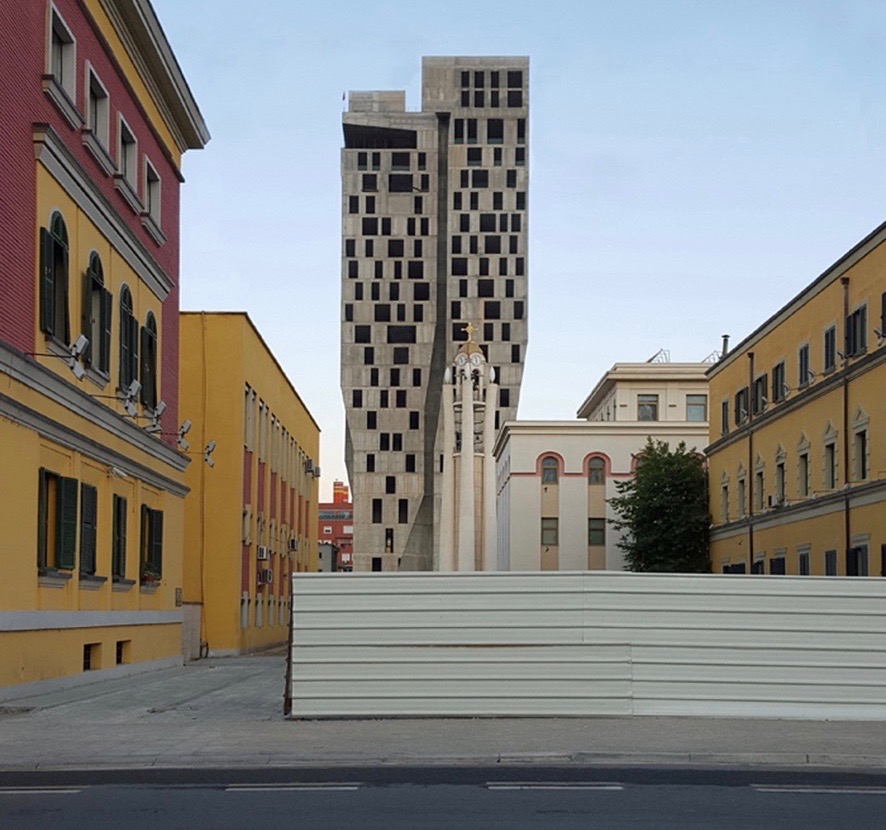
Casamonti is well-known in Tirana for one of the city’s biggest ugliness, the 4Evergreen Tower – part of the tenth top tower plan foreseen in the master plan of Tirana center by an architectural studio chosen by Edi Rama in 2003. The tower builder has gone bankrupt and she stands in the middle of the unfinished city, remaining forever gray.
His other project, never unrealized, is the winner of the second prize competition for a shopping mall near Qemal Stafa Stadium, for the builder Samir Mane (that of strategic investments). In other words, Casamonti certainly had the credibility to undertake another prominent project.
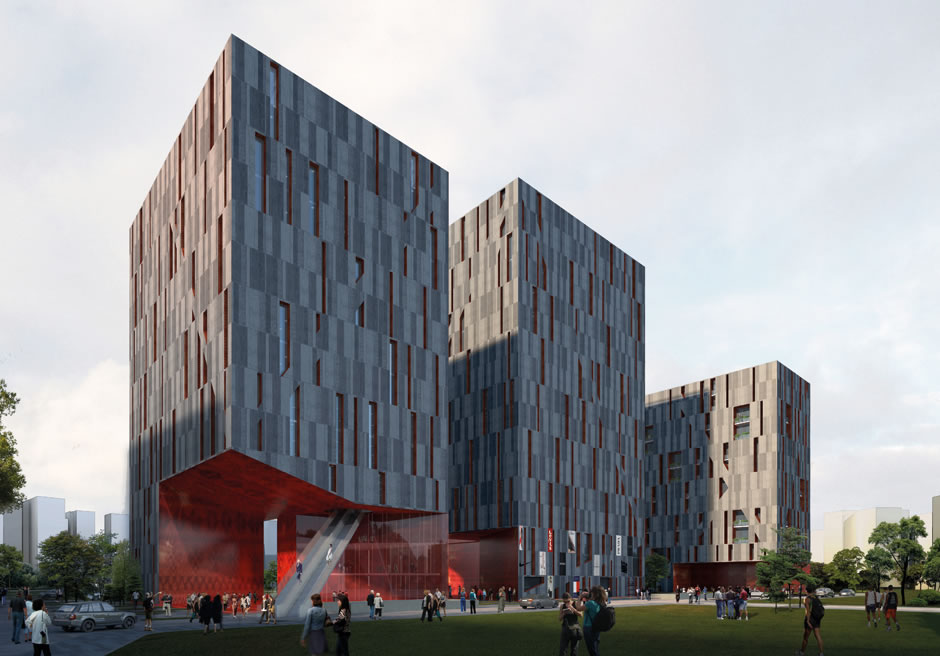
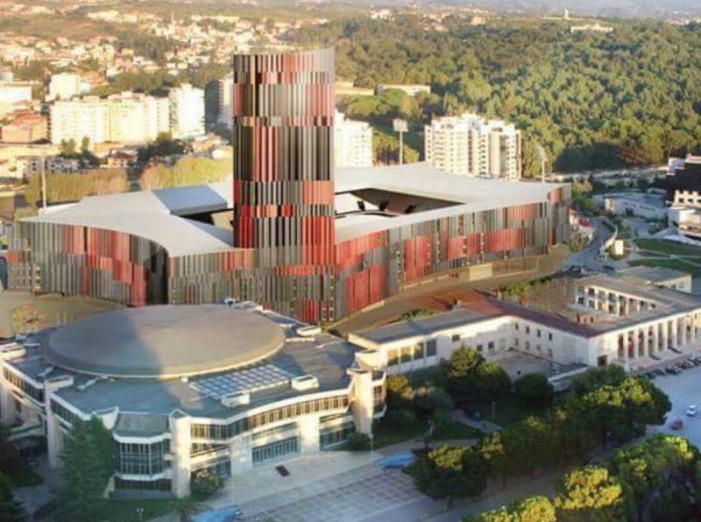
As can be clearly seen from both renderings, in formal language terms the shopping center and stadium project are approximate, with vertical slats and black / gray / red pallets. Given the speed with which the project was introduced and promoted through all levels of government, one can not imagine that the architect has had time to do a deep search for the site and building area, history and context.
The Casamont plan completely ignores the fact that the original stadium was part of a monumental building complex that dates back to the fascist period of the city plan, designed by Gherardio Bosio. As such, he was one of the most well-preserved modernist Italian architectural ensembles, and legally protected as a category II cultural monument.
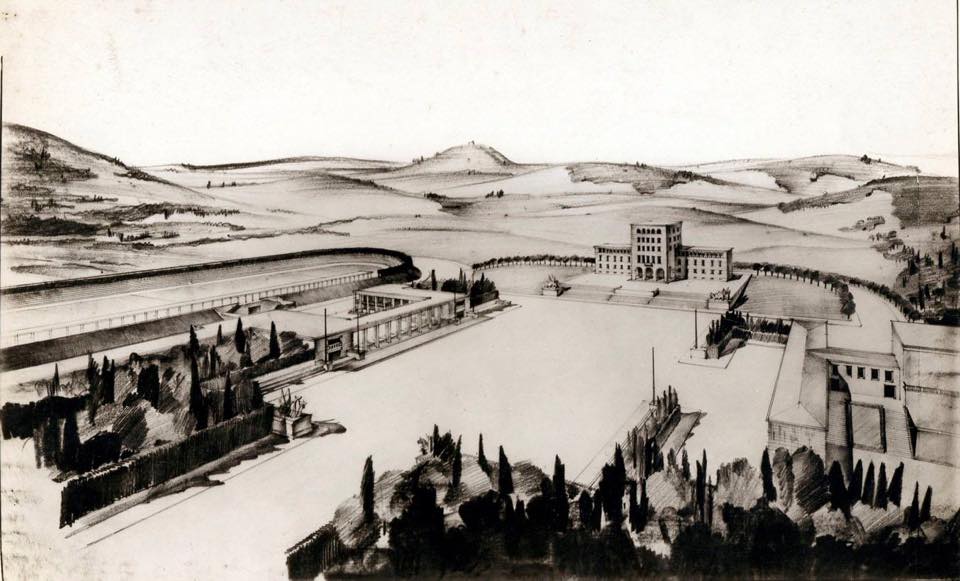
On July 2nd, when everything except the stadium façade was destroyed at record speed, the National Restoration Council, headed by Culture Minister Mirela Kumbaro, gathered in the rubble of Qemal Stafa Stadium.
The mental gymnastics of those involved in this so close meeting were of Olympic standards. Because it should be argued that the original facade (and only the facade) designed by Bosio was the only “monumental” thing in the stadium (and not even the entire facade), and that the preservation of the façade-whatever meaning it had “preservation” preservation of the monument of the architectural ensemble around Mother Teresa Square.
I quote the words of Mirela Kumbaro:
“The main western façade is the part that respects the original project and idea of Bosios, not only that, this facade within which we are the architectural and cultural link bridge with the rest of the city: the Italian square, the Mother Teresa Square, the architectural complex beyond , but also with the nostalgies of the city and the fans as well as with the memory of the professionals.
Today we will not judge whether or not the stadium should be, whether or not it is here. This decision is taken and I personally have no doubts that I must and as a member of the NCT, I reaffirm my approval for this. ”
And to Edi Rama:
“We are not in front of the fact that we simply have to keep a piece of cultural heritage, but we are also ahead of the fact that we must re-launch that piece of cultural legacy that has been endlessly barbarized for many years. […] We will have the facility that Gherardio Bosios had promised and which coincides almost 100 percent with what he wanted to have here as the entrance to the stadium. ”
To think of an architectural monument just in relation to his façade, as if it were a two-dimensional design of pavolion and uncontrollable, which can be placed within any other environment without changing meaning, is of course an illusion of illusion.
Surely, as much disappointment as when it was argued that Phillipe Parrenos’s shelters do not hurt the facade of the Prime Minister’s Office (another Bosios project) because it is “temporary”. It seems that mental gymnastics is the only Olympic sport in which our political team can win a medal.
It should be noted that none of the concrete plans for “rebirth” were made public. The only thing we have seen is the white panels of Alb-Star that surround the shipyard, and behind them the lost facade of Bosi in a desert of ruins.
But it was not everything. The Casamont Project included, inexplicably, a large “multifunctional shopping center” tower. Who has ever seen a stadium with a skylight at its peak? – this reasonable question continues to be from thousands of citizens.
One might really wonder if Bosio had imagined that his facade would serve as an entrance to the luxury apartments of Rama’s allies and close associates-if that was the true “intention” of him as author. We will never know. However
Rama insisted that a skylight stadium is very modern, but we are all caves. The end of the argument; he needs a thing set up on every piece of Tirana land.
Then, one morning, Tirana woke up and found that the facade was thrown to the ground. As photos of the demolition were circulating throughout the day, people were rightly bored that the last part of that historic building was destroyed. Suddenly, at the end of the day, Rama revealed on his Facebook page that the original facade stones were stored and would be placed at the end of the project to “recreate” the entrance.
In other words, the concept of a “cultural monument” that seems to dominate the heads of cultural visionaries that govern us, culture is something superficial, like a “skin.” Remove the outer skin, put it somewhere to save it, rubbish the dust, the monument was saved. It will not be a long day to apply this method to Butrint, Apollonia or the Durrës amphitheater.
However, the message-and the language-with which Rama “informed” his citizens about this unusual procedure for the “preservation” of monuments is to be pointed out. It is to be emphasized because it clearly points to each other the “worthless” cultural heritage of socialism with the “worthwhile” legacy of fascism.
The message was even more remarkable because of the great contempt and arrogance that sprang up in every word of it – utter contempt and hate for anyone without having any information about the project, budget, deadline or explanation needed around the stadium his “national, felt honestly touched and indignant about the loss of a memorable place. (Include Me too).
I invite you to read the message again so that we do not forget how our prime minister addresses us.
In this context of the facade, it is interesting that suddenly the expression “return to identity” emerges suddenly, an expression that was elevated to the first mandate of Rama as a mayor in the early 2000s when “return to identity” included the demolition of “informal” – the operation that was paid by the construction client companies that were awarded the building permit – and, in particular, the painting of the blocks of socialist housing blocks.
So we can conclude that for Rama the concept of “facades” and the concern for “return to identity” are conceptually related; if the key to the identity contained the facade in itself, rather than what is behind it.
Since a façade can be painted, removed, moved, that such a transformation or transfer can constitute “return”, is what lies at the heart of this idea. Rama’s “return” is not an attempt to rebuild, a work to remember or look inside, but it is always essentially the ruin of the past.
We have seen this from time to time in the way it deals with the cultural monuments or, in general, the places of memory, and perhaps also its memory, as well.
My last point, and I will leave it, is that perhaps the most curious aspect of Rama’s response is the fact that he, being Prime Minister of Albania, felt he was the right person to respond to the boredom and confusion of people .
The Stadium Project is officially and legally the responsibility of the Red Cross Sports Center, where the state owns only a few quota shares, while 75 percent are in the hands of a chicken farmer.
I would be more interested to know what the owner of the majority of the shares of the new national stadium has to say on this issue. Or maybe, just maybe, the National Arena is actually a project that is being implemented by the government and all of its legal devotion has been aimed at avoiding public laws?
Or these thoughts come from my provincial curiosity …


